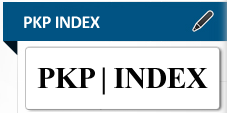Analisis Potensi Gempa di Selatan Pulau Jawa Berdasarkan Pengamatan GPS
Abstract
ABSTRAK
Pulau Jawa merupakan salah satu pulau yang memiliki kepadatan penduduk tinggi dengan aktivitas tektonik yang sangat aktif. Hal ini dikarenakan Pulau Jawa terletak di zona konvergensi Lempeng Indo-Australia dan Lempeng Eurasia. Aktivitas tektonik ini menghasilkan kegempaan di zona subduksi dan sesar di daratan Penelitian ini menganalisis pola vektor kecepatan yang dihasilkan melalui pengolahan data stasiun pengamatan GPS (Global Positioning System) CORS (Continuously Operating Reference Station) BIG (Badan Informasi Geospasial) di wilayah Pulau Jawa bagian selatan. Data koordinat harian dianalisis dengan metode PCA (Principal Component Analysis) untuk memisahkan sinyal tektonik berupa data deret waktu global dan non-tektonik berupa data deret waktu lokal dengan penerapan aturan pemilihan varian dominan nilai eigen dalam pembetukan PC (Principal Component) dan orthogonal vektor eigen sebagai bobot dalam meminimalkan korelasi. Hasil dari data deret waktu global dan lokal digunakan untuk menghitung besar kecepatan pergeseran dari tahun 2011 sampai 2018. Hasil pengolahan menunjukkan besar resultan vektor kecepatan pada data awal berselang 0,06 sampai 10,46 mm/tahun, pada data global antara 0,06 mm/ tahun sampai 10,39 mm/tahun, dan data lokal sebesar 0,0037 sampai 1,99 mm/tahun. Variasi spasial vektor kecepatan pengamatan GPS data domain PCA menunjukkan variasi pergeseran horizontal di wilayah Banten bergerak ke arah timur laut; Jawa Barat, Daerah Istimewa Yogyakarta, dan Jawa Tengah bergerak ke arah tenggara; dan Jawa Timur bergerak ke arah timur laut. Hasil dari inversi data pergeseran terhadap slip pada zona subduksi, menunjukkan terjadinya kekurangan slip atau terjadi coupling pada zona subduksi Jawa bagian timur dan barat, sementara terjadi kelebihan slip pada bagian tengah yang merupakan efek postseismic dari gempa Pangandaran 2006.
Kata kunci: GPS, PCA, potensi gempa, vektor kecepatan
ABSTRACT
Java is one of the island that has a high population density with very active tectonic activity. This is because Java Island is located in the convergence zone of the Indo-Australian Plate and the Eurasian Plate. This tectonic activity produces seismicity in subduction zones and inland faults. This study analyzes the velocity vector patterns generated through data processing of the GPS (Global Positioning System) CORS (Continuously Operating Reference Station) BIG (Geospatial Information Agency) observation station in the southern part of Java. Daily coordinate data were analyzed using PCA (Principal Component Analysis) method to separate time series of tectonic signals as global data and non-tectonic time series data as local data by applying the rules for selecting dominant variants of eigen values for PC formation and orthogonal eigen vectors as weights in minimizing correlations. The results from global and local time series data were used to calculate the magnitude of the displacement velocity from 2011 until 2018. The processing results show the resultant velocity vector in the initial data intermittent 0.06 to 10.46 mm/year, global data from 0.06 to 10.39 mm/year, and local data of 0.0037 to 1.99 mm/year. The spatial variation of the velocity vector in PCA domain data shows the horizontal displacement in the Banten region to the northeast; West Java, Yogyakarta Special Region, Central Java to southeast; and East Java moving to northeast. The results of the inversion of the surface displacement to slip data in the subduction zone show that there is a slip deficiency or coupling occurs in the subduction zones of Eastern and Western Java, while there is excess slip in the Central Java which is a post-seismic effect of the 2006 Pangandaran earthquake.
Keywords: earthquake potential, GPS, PCA, velocity vector
Keywords
Full Text:
PDFDOI: http://dx.doi.org/10.34126/jlbg.v11i3.352
Refbacks
- There are currently no refbacks.

This work is licensed under a Creative Commons Attribution-NonCommercial 4.0 International License.









